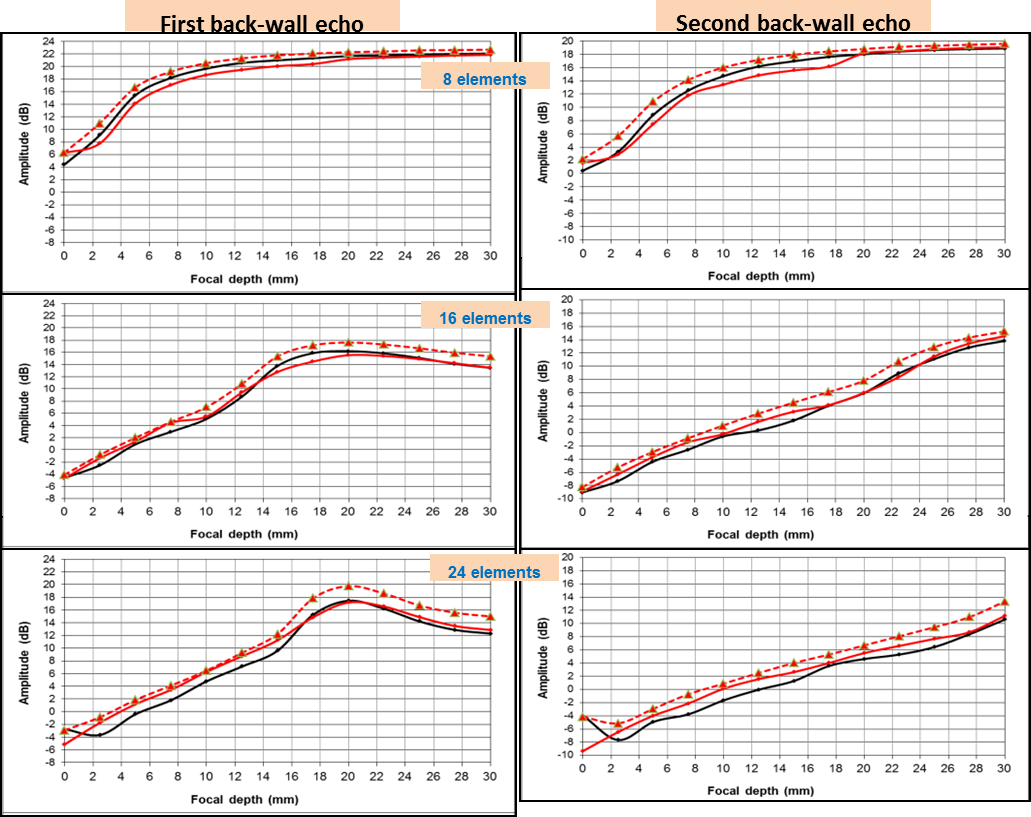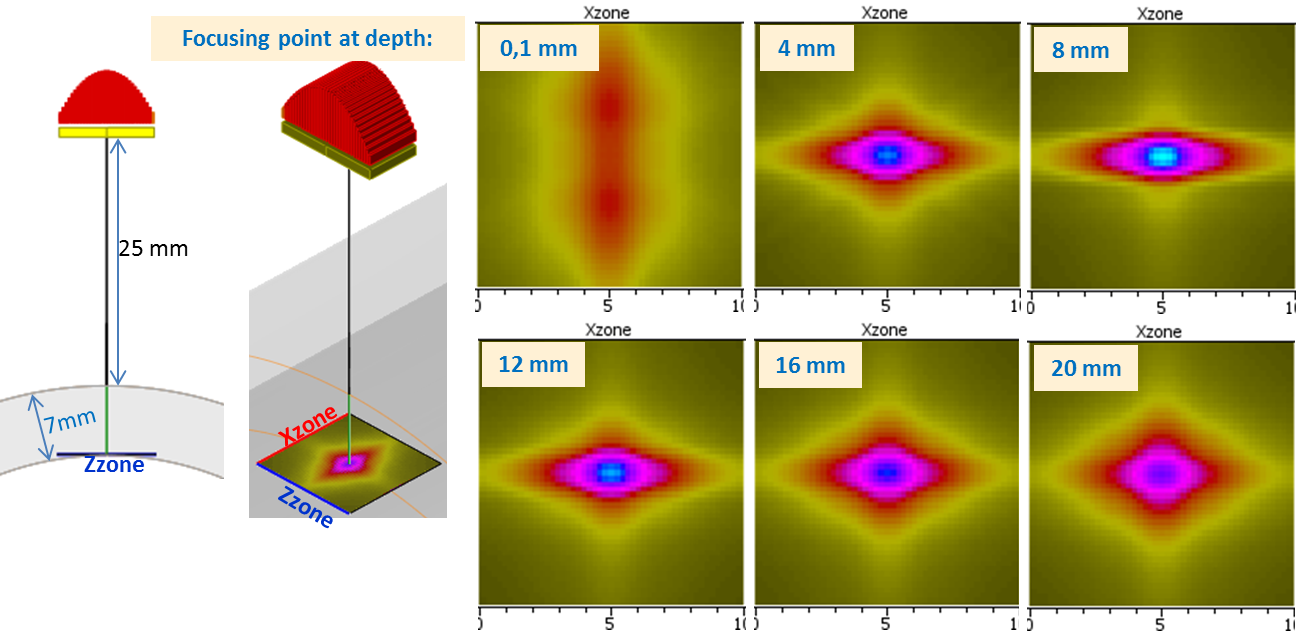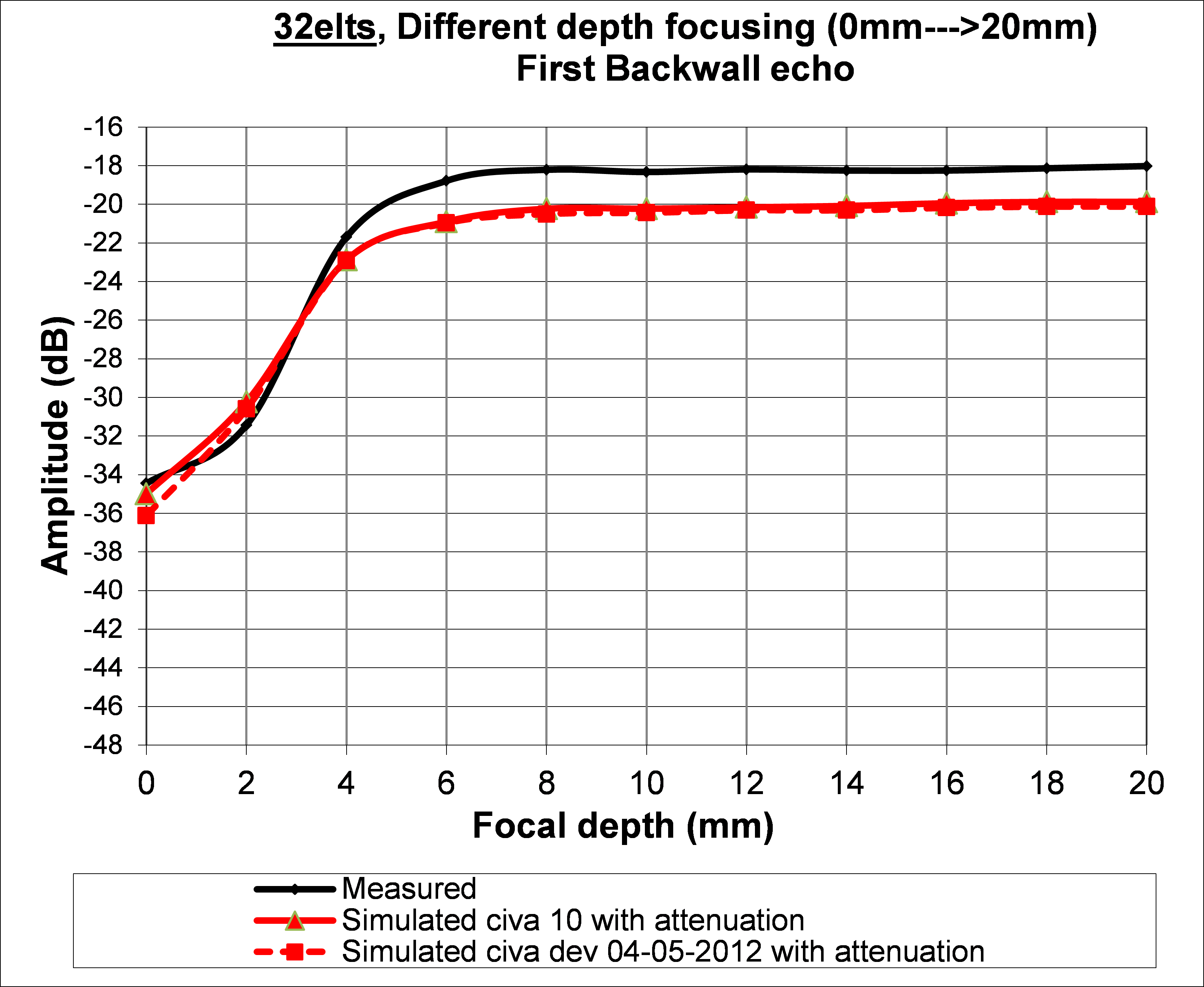Linear array, 64 elements, 3 MHz, L0°
| Ø Crystal (mm) | Mode | Frequency (MHz) | Bandwith (%) | Phase (°) |
|---|---|---|---|---|
| Linear (64 elts) | L0° | 3 | 90 | 310 |
The rectangular backwall echo is computed with the 64 element linear array positioned parallel to the specimen surface. Focal laws at different points located along L0° axis, from 0.1 mm to 30 mm depth by 2.5 mm steps are applied.
Results are calibrated from a Ø6 mm FBH, located at a depth of 150 mm and with a null delay law. The first and second backwall echo amplitudes, obtained by focusing at different depths, for three active element sequences and 25 mm water path, are plotted here below in black for the experiment measurements, in red for Kirchhoff model results and in red dotted for specular model results.
Both CIVA models are in good agreement with measurements concerning the first and second backwall echoes.
Linear array, 32 elements, 10 MHz, L0°
| Ø Crystal (mm) | Mode | Frequency (MHz) | Bandwith (%) | Phase (°) |
|---|---|---|---|---|
| Linear (32 elts) | L0° | 9 | 55 | 290 |
The specimen is a tube with a 76 mm external diameter and 7 mm thickness. The backwall echo has been measured for focal laws at different points at different depths from 0 mm to 20 mm, by 2 mm steps, for 25 mm water path and 32 active elements. Radiated field examples are presented here below:
Results are calibrated on a flat surface echo with a 0° angular deflection. First backwall echo amplitudes obtained for focal laws at different points at different depths from 0 mm to 20 mm, by 2 mm steps, for 25 mm water path and 32 active elements, are plotted here below in black for experimental measurements, in red for Kirchhoff model results and in red dotted for specular model results.
For a focal depth less than 4 mm, both CIVA model results are in very good agreement with measurements. Then amplitudes are constantly 2 dB underestimated by CIVA, which remains very close to measured results.
Back to backwall echoes
Back to geometrical echoes



